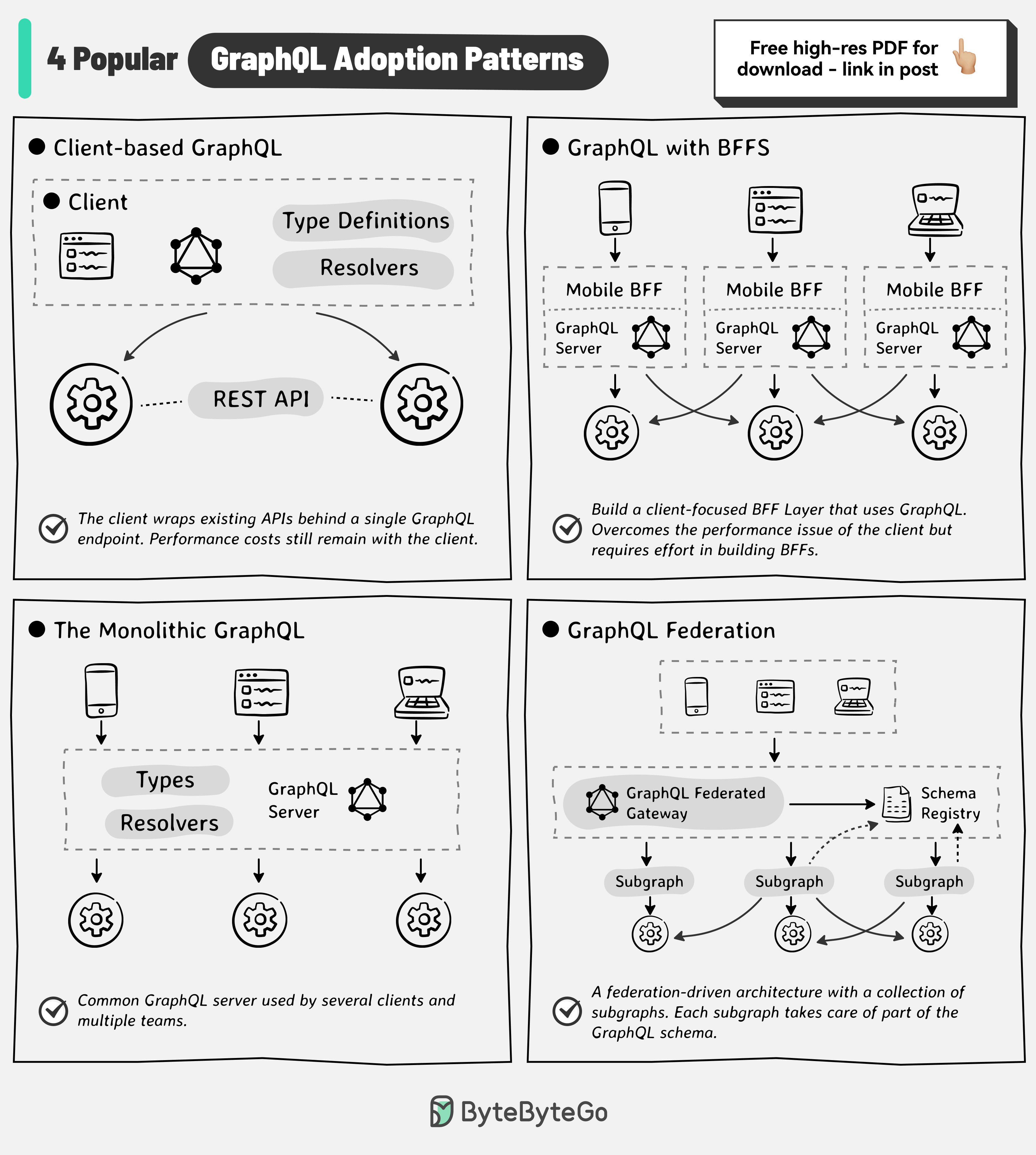Explore 4 popular GraphQL adoption patterns for your team.

Typically, teams begin their GraphQL journey with a basic architecture where a client application queries a single GraphQL server.
However, multiple patterns are available:
Client-based GraphQL
The client wraps existing APIs behind a single GraphQL endpoint. This approach improves the developer experience but the client still bears the performance costs of aggregating data.
GraphQL with BFFs
BFF or Backend-for-Frontends adds a new layer where each client has a dedicated BFF service. GraphQL is a natural fit to build a client-focused intermediary layer.
Performance and developer experience for the clients is improved but there’s a tradeoff in building and maintaining BFFs.
The Monolithic GraphQL
Multiple teams share one codebase for a GraphQL server used by several clients. Also, a single team owns a GraphQL API that is accessed by multiple client teams.
GraphQL Federation
This involves consolidating multiple graphs into a supergraph.
GraphQL Federated Gateway takes care of routing the requests to the downstream subgraph services that take care of a specific part of the GraphQL schema. This approach maintains ownership of data with the domain team while avoiding duplication of effort.
Over to you: Which GraphQL adoption approach have you seen or used?